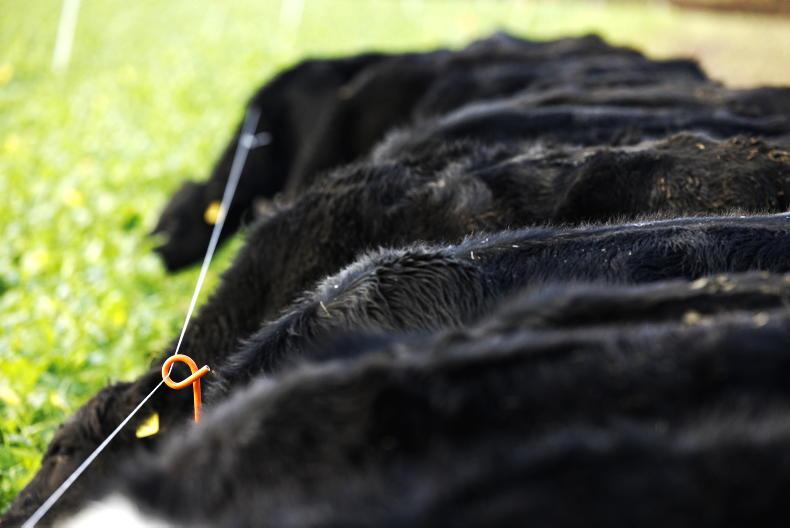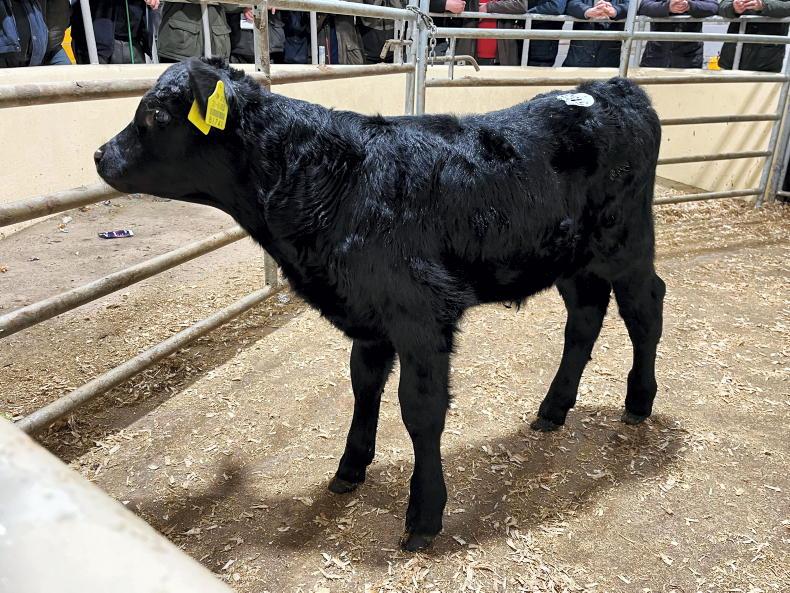Dairy calves reared to beef which are sired by five-star terminal index Angus bulls have 13% lower emissions across their lifetime, ABP has found.
On its dairy calf-to-beef demonstration farm in Co Carlow, ABP also found that when compared with calves sired by one-star Angus bulls, the five-star-sired calves had a carcase which was 46kg heavier, adding €202 in slaughter value.
ABP sustainability manager Stephen Connolly said that across a 100-calf system, such a price gap would be worth €20,200 to a farmer.

The 420 calves on the ABP dairy beef trial farm are brought to slaughter through the same system. \ Donal O' Leary
The analysis was conducted on calves bought and slaughtered at the same ages, with heifers finished at 19 months and steers finished at 21 months.
“It clearly shows environmental and economic sustainability can go hand in hand,” he said.
Trial
At the ABP trial farm, 420 calves are taken in through the Gene Ireland programme and reared in the exact same way.
“We purchase them at about three weeks of age. We buy roughly 20 calves from each bull and we buy the good, the bad and the ugly, because we want it to be a representative sample of our trial and also what is out there in the industry,” explained Connolly.
ABP collects and feeds calf weight and health data to the Irish Cattle Breeding Federation and 150 calves go to the national feed intake centre, which measures individual feed intake and methane emissions from each animal.

ABP buys 420 Angus-sired calves from across the country.
“When the animals are slaughtered, we get the carcase weight data, the conformation and the carcase value and then a portion of these animals get steak samples taken for meat-eating quality.”
The ABP representative suggested that with such findings, the days of buying a calf just on “looks” have to be in the past.
Read more
Beef farmers need to ask more questions when buying calves
Over 80% of dairy beef calf's diet already on the farm - Teagasc
Dairy calves reared to beef which are sired by five-star terminal index Angus bulls have 13% lower emissions across their lifetime, ABP has found.
On its dairy calf-to-beef demonstration farm in Co Carlow, ABP also found that when compared with calves sired by one-star Angus bulls, the five-star-sired calves had a carcase which was 46kg heavier, adding €202 in slaughter value.
ABP sustainability manager Stephen Connolly said that across a 100-calf system, such a price gap would be worth €20,200 to a farmer.

The 420 calves on the ABP dairy beef trial farm are brought to slaughter through the same system. \ Donal O' Leary
The analysis was conducted on calves bought and slaughtered at the same ages, with heifers finished at 19 months and steers finished at 21 months.
“It clearly shows environmental and economic sustainability can go hand in hand,” he said.
Trial
At the ABP trial farm, 420 calves are taken in through the Gene Ireland programme and reared in the exact same way.
“We purchase them at about three weeks of age. We buy roughly 20 calves from each bull and we buy the good, the bad and the ugly, because we want it to be a representative sample of our trial and also what is out there in the industry,” explained Connolly.
ABP collects and feeds calf weight and health data to the Irish Cattle Breeding Federation and 150 calves go to the national feed intake centre, which measures individual feed intake and methane emissions from each animal.

ABP buys 420 Angus-sired calves from across the country.
“When the animals are slaughtered, we get the carcase weight data, the conformation and the carcase value and then a portion of these animals get steak samples taken for meat-eating quality.”
The ABP representative suggested that with such findings, the days of buying a calf just on “looks” have to be in the past.
Read more
Beef farmers need to ask more questions when buying calves
Over 80% of dairy beef calf's diet already on the farm - Teagasc








 This is a subscriber-only article
This is a subscriber-only article










SHARING OPTIONS: